|
|
|
Thames and Hudson
|
Ukrainian photographer Boris Mikhailov has become famous for using the social documentary style to reveal the plight of marginalized communities, particularly as they have been dispersed in the wake of the dissolution of the Soviet Union: in his 1998 Case History series, for example, Mikhailov examined the lives of the homeless population in Kharkov, in the Ukraine. Mikhailov broaches entirely new territory with this substantial volume, a dynamic portrayal of a group of actors and non-actors in the German city of Braunschweig (Brunswick), all of whom were auditioning for roles in the Aeschylus play, The Persians. The play was produced as an allegory of war and a young democracy, with members of the public taking the role of the chorus, creating a contemporary resonance that Mikhailov was immediately drawn to. The photographer became a part of the production process, and his record of the occasion is divided across three chapters: Shooting, Bus Stop and Home Theater. He writes of his process: My former slapdash Soviet methodologies united with German reality have helped me, I believe, to manifest something new. Perhaps something very small and simple but in some way very pure. Beyond this record of a social collaboration and a singular community, Mikhailov has made a moving portrait that addresses the future of Germany. |
|
From posters and advertisements to book covers and magazines, this book presents a dazzling panoply of modern graphic design in China. Beginning with the basic traditions of Chinese graphics, the authors show how the writer and artist Lu Xun became the center of cultural revival in the new China. We see Art Deco coming to China in the Shanghai Style, and the birth of a dynamic national design style, born of Russian Constructivism and China's own drive for new technology. The Socialist Realist art of Mao in turn adopted folk art traditions to fuel the Revolutionary machine, while the continuing search for a new identity can be seen in the graphic images of protest from the summer of 1989. |
|
A guide to different types of fabric in circulation. It describes over 600 examples, from classic tweeds to nano fabrics. It is suitable for design students, teachers, designers, historians, manufacturers, buyers and merchandisers worldwide. |
|
A guide to making and customizing your own clothes, bags and accessories. It contains over 40 thrifty, sustainable and stylish projects, none of which require prior skill or a sewing machine. It also includes projects showing how to create jewellery and accessories. It offers ideas, ranging from customized hand-me-downs to elegant evening wear. |
|
Providing a mix of practical information and the industry vocabulary, this easily navigable reference book will help students gain a clear understanding of how to work with fabrics as an integral component of the fashion design process. |
|
Covering various areas of fashion drawing, presentation and illustration, this title teaches students how to draw the fashion figure. From initial inspiration though to the finished illustration, it teaches the student how to draw from life and depict body proportions. It also includes advice on exaggerating proportions for effect. |
|
With modes of production ranging from the reimagined traditions of drawing, painting and collage, to the wide range of computer-based applications, and a myriad of unique combinations of both hand and digital means, todays illustrators are breaking the mould in terms of production. This book investigates these myriad ways of working and creating. |
|
A splendid, surprising, and original work of photography, this book is ideal for lovers of contemporary art and the boldest means of expression. Seventy images reveal the painful truth that beauty is fleeting. Gastel, who has been exalting beauty for years, challenges himself by confronting one of the deepest philosophical and literary themes. |
|
Contains photographs of interiors, exteriors, furniture, found objects, textiles and much more, capturing the essence of London. This book includes a Victorian street in Shepherds Bush, a former wine warehouse in Bermondsey or a converted pair of classical houses on Royal Avenue in Chelsea. |
|
Takes a fresh look into the private dwellings of exciting young creative talents in London, from the music, fashion, design and art worlds. This book features 28 houses that are arranged by location, in the grooviest, on-the-edge neighbourhoods from Whitechapel to Notting Hill, and Camberwell to Clerkenwell. |
|
Pattern is everywhere. Years of minimalism have been superseded by a riot of color and shape, whether on walls, fabrics, clothes, or signage. Print and Pattern is a visual celebration of contemporary surface design. Compiled by the creator of the cult blog of the same name, this book documents the work of the best surface designers from around the world and features products that have been embellished with a surface print or pattern, including graphics, cards, gift wrap, stationery, textiles, ceramics, badges, stickers, and wallpaper. As well as successful commercial designs, the book also showcases previously unseen pattern designs from designers' portfolios. Accessible but with a cool edge, the book will appeal to surface designers, graphic designers, designer-makers and craftspeople, illustrators, and fashion and textile designers. |
|
How do they see the world? How much do they respect, build on or reject tradition? Are they busy in the darkroom or the computer lab or both? This title features more than 200 images brimming with inspiring creativity and ingenuity, that answers these questions. |
|
A celebration of the art of the stencil. It features the 20 stencils, printed on perforated card stock that can be torn out and used, and have been created by an impressive list of international street artists, from the masters to the new kids on the block. It is suitable for artists, illustrators and those who love street art. |

|
Addresses the changes that are occurring within advertising, from the perspective of key figures within the industry. This book is split into five chapters, which deal with the main themes relevant to the advertising industry today: Digital, Branded, Ambient, Integrated and Self-Initiated. Each chapter contains a series of case studies. |
|
Tim Burton has reinvented Hollywood genre filmmaking over the past three decades. With a visual style inspired by the aesthetics of animation and silent comedy, Burton's work melds the exotic, the horrific and the comic, manipulating expressionism and fantasy with the skill of a graphic novelist. Published to accompany a major career retrospective at The Museum of Modern Art, this affordable volume considers Burton's career as an artist and filmmaker. It narrates the evolution of his creative practices, following the current of his visual imagination from his earliest childhood drawings through his mature oeuvre. Illustrated with works on paper, moving-image stills, drawn and painted concept art, puppets and maquettes, storyboards and examples of his work as a graphic artist for his non-film projects, this volume sheds new light on Burton and presents previously unseen works from the artist's personal archive. Acclaimed American filmmaker Tim Burton (born 1958) is known for his dark, gothic films about quirky outsiders, many of which are both Hollywood blockbusters and cult classics. To date they have been nominated for 16 Academy Awards and have won six. They include Pee-Wee's Big Adventure (1985), Beetle Juice (1988), Batman (1989), Edward Scissorhands (1990), Batman Returns (1992), Ed Wood (1994), Sleepy Hollow, (1999), Charlie and the Chocolate Factory and Corpse Bride (both 2005) and Sweeney Todd: The Demon Barber of Fleet Street (2007), among others. Alice in Wonderland is slated for 2010. Burton has collaborated extensively with composer Danny Elfman and with actors Johnny Depp and Helena Bonham Carter. |

|
«The illustrated weekly magazine «VU» ran over 600 issues between 21 March 1928 and 29 May 1940. This book offers «VU» the attention it deserves by reproducing a selection of front covers, pages and spreads from its short but prolific history, together with the commentary and analysis.» |

|
New in paperback, this book features hundreds of the finest, most inspired ads and campaigns from the best creative teams in the world. Freelance copywriter and designer Uwe Stoklossa shares the secrets behind successful advertising with countless examples of ads he has collected from around the world, and also in the accessible, intriguing essays he writes on perception, optical tricks and illusion. Advertising will arm designers with a myriad of clearly explained techniques for visual seduction, and will appeal to advertising agencies, art directors and all brand professionals. |
|
In this collaboration between a psychoanalyst and a costume curator, Adam Phillips re-describes dress in terms of anxiety, wish and desire. His definitions for words we associate with fashion and appearance are paired with installations by Judith Clark secreted amongst the Victoria & Alberts vast reserve collections at Blythe House in west London. In this deeply idiosyncratic book, says Phillips, a dictionary of language and installation plays off information against evocation, getting it right against the gorgeous eccentricity of personal association. Offering multiple definitions for each word, Phillips broadens the scope for our interpretation and questions the precise nature of what indeed constitutes a definition. And in his lengthy introduction to this book, Phillips also assesses what dictionaries are, how we use them and why they matter. Clark herself presents a written analysis of her installations in answers to questions posed anonymously to her by authorities in fields as varied as cultural theory, fashion history, arts curation, neuroscience and psychogeography. In addition to the texts by Phillips and Clark and a catalogue of the works exhibited, The Concise Dictionary of Dress replicates the visitors hourlong journey through Blythe House in a book-length photo-essay, a personal tour that is as individual in its perspective as the work itself. |

|
Is there a signature Rochon style? At first, it is difficult to tell because the designer always adapts his work to the environment in which it unfolds, bringing out the locations unique spirit. A great traveler, he blends international styles, borrowing from both modern and classical influences. Hailed as a visionary designer and master of grand luxe by the Financial Times How To Spend It, Rochons most prestigious commissions include Four Seasons Hotelsin Paris, Florence, Washington, and Cairo, for example and restaurants for several Michelin-starred chefs. This monograph Rochons first reveals the designers trademark approach to interior splendor. For him, the quality of the object and the hand that made it is essential for creating a sumptuous interior. He devotes attention to every detail, from the architecture, to the furniture, the lighting, the fabrics, and art objects. Where he inserts a new structure into a space, such as a fireplace or a column, it feels like it has always been there. His interiors thus exude harmony and comfort, while retaining a strong sense of the locations culture, geography, and history. The genius of this designer lies in his ability to make each interior feel like a second home. From bedrooms to living rooms, and from bathrooms to spas, Pierre-Yves Rochon creates comfortable and intimate interiors that show us how we might create our own luxurious decors in our homes. The address book compiled by Rochon brings together the very best artisans with whom he has worked for many years: cabinet makers, bronze makers, lighting experts, upholsterers, and more. |

|
A message from Dave the Chimp: Colouring books are boring! Grown-ups have no idea what us kids want to see and do. We know that painting and drawing and making things is Fun! Luckily, some grown-ups never forget this, and thats why they become artists, so that the fun of making and doing never stops! All the drawings in this book are made by artists that usually make their art in the street (sometimes called Graffiti or Street artists). They put art in places its not supposed to be, make art to make the world smile, like to have fun and don't care about the rules. And they don't care if you colour inside or outside of the lines. So have fun with this book. Fill the pages with colour. Add your own drawings or copy the ones that are here. Cut them out and stick them on your bedroom walls. Help us to make this world a more colourful place. And remember — outside the lines is fine! Outside the Lines enables you to find your inner street artist without leaving your home. Aimed at children, small and large, this book challenges you to create your own street art on the page, inspired by some of the best street artists from around the world. |
|